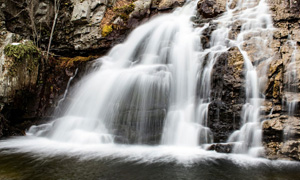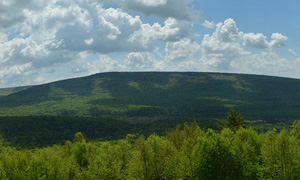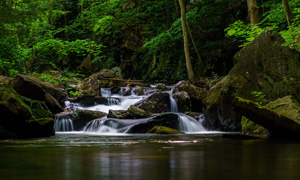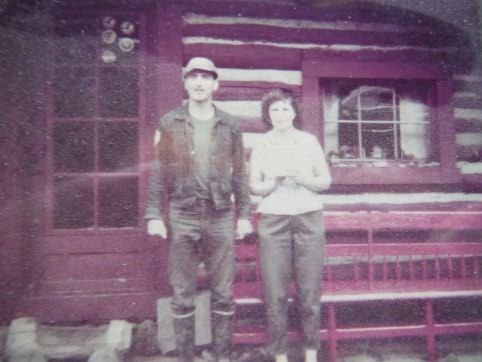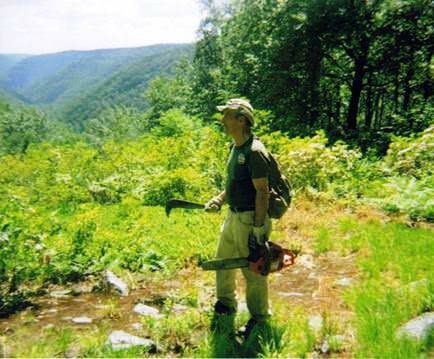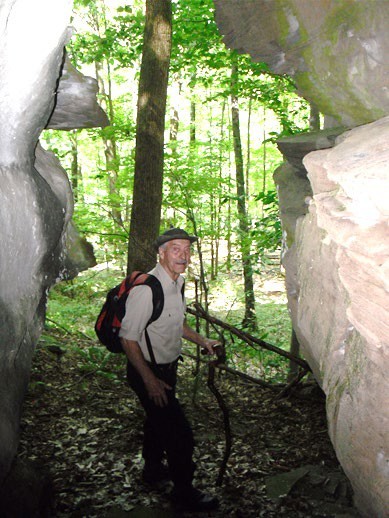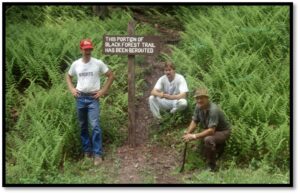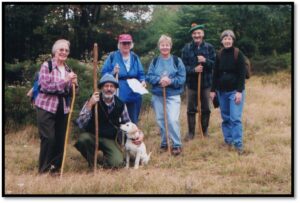 This post is a consolidation of two Forest Fridays articles from DCNR’s Bureau of Forestry about Bob Webber. The first was published on 4/8/2025, and the second on 6/7/2025 in honor of National Trails Day.
This post is a consolidation of two Forest Fridays articles from DCNR’s Bureau of Forestry about Bob Webber. The first was published on 4/8/2025, and the second on 6/7/2025 in honor of National Trails Day.
Both articles were authored by Matthew Crosbie.
Bob Webber was well-known for his unique lifestyle, love for the outdoors, and strong work ethic. He created many hiking and skiing trails and worked diligently to promote and maintain them. Bob passed away 10 years ago on April 21, 2015. Born in December of 1934, he would have been 90 now. While Bob’s heart was in the Slate Run area of the Tiadaghton State Forest, his impact was felt throughout the state.
Although his humor and enthusiasm conveyed a sense of almost perpetual youth, Bob’s age was shown through his wisdom. Bob was well-known for his “off-the-grid” lifestyle, which was something he didn’t seem to give a second thought. Nestled on a narrow ridge in the Tiadaghton was a small cabin with no electricity or running water. He lived there for five decades with his wife, Dotty. They stayed busy with simple things, and you would often find the pair on the porch reading, where they would kindly welcome friends inside for tea or greet curious visitors – which increased in frequency after several newspaper articles were written about them. One would leave from their place with a sense of calm and happiness. There was something different – a peace seems to come from that sort of remote and quiet place – yet your mind would be mulling the many stories Bob would expertly tell, something for which he was well known.
Bob Webber was well-known for his unique lifestyle, love for the outdoors, and strong work ethic. He created many hiking and skiing trails and worked diligently to promote and maintain them. Bob passed away 10 years ago on April 21, 2015. Born in December of 1934, he would have been 90 now. While Bob’s heart was in the Slate Run area of the Tiadaghton State Forest, his impact was felt throughout the state.
Although his humor and enthusiasm conveyed a sense of almost perpetual youth, Bob’s age was shown through his wisdom. Bob was well-known for his “off-the-grid” lifestyle, which was something he didn’t seem to give a second thought. Nestled on a narrow ridge in the Tiadaghton was a small cabin with no electricity or running water. He lived there for five decades with his wife, Dotty. They stayed busy with simple things, and you would often find the pair on the porch reading, where they would kindly welcome friends inside for tea or greet curious visitors – which increased in frequency after several newspaper articles were written about them. One would leave from their place with a sense of calm and happiness. There was something different – a peace seems to come from that sort of remote and quiet place – yet your mind would be mulling the many stories Bob would expertly tell, something for which he was well known.
Bob was also known as an outdoorsman, and not just a hiker, stalking wild brook trout in remote mountain streams and standing watch for those elusive big-woods bucks with his well-worn rifle. Bob romanticized the pioneer days in Pennsylvania, reading books on the history and folklore of the area. He would even search for some of the landmarks such as the panther cave of Little Miller Run from one of Henry Shoemaker’s books, the Wild Man’s Spinning Wheel Rocks of the Fahneystock, or the mysterious cave of Philip Tome’s elk hunt. Just the idea of these places kept him going with excitement, despite always turning up empty-handed. His love for Penn’s Woods kept him exploring the mountainsides until his last days.
Bob worked as a Forest Foreman for the Bureau of Forestry at Pump Station near the village of Black Forest. He of course worked on all sorts of maintenance projects, but his passion was trail construction and maintenance. Bob, along with forester John Eastlake and others, helped to create the popular Black Forest and Golden Eagle trails, as well as numerous ski trails.
After retirement, he built a trail to a stunning view overlooking Wolf Run Wild Area. Bob had a name picked out for it, but it was decided to be named in his honor. He was still helping create trails in his last few years – The Dragon’s Back Ridge Trail was the last. He worked tirelessly after retirement to maintain these trails, volunteering at least two days a week.
Finding Inspiration on National Trails Day
National Trails Day is [the first Saturday in June] and a good time to take a hike and give back to the trails through volunteering and stewardship. Many influential conservation and recreation champions helped shape the incredible trail systems currently found in Pennsylvania. One of whom, Bob Webber, can provide inspiration to us this National Trails Day.
Bob Webber’s legendary work on trails reached beyond his home in the Tiadaghton. He originally cut the vistas at Rider Park, adjacent to Loyalsock State Forest, and helped create the Bee Tree Ski Trail in Tioga State Forest. He also helped maintain a section of the Susquehannock Trail System (STS) in the Hammersley Wild Area with some of his friends for years.
Bob especially cherished opportunities to lead the Youth Conservation Corps on the trails. A masterful entertainer, he kept them hard at work while instilling a deep appreciation of nature. He spoke of those days fondly and program attendees enjoyed it just as well. Participants were known to speak of the experience decades later, a testament to his mentorship and a reminder of the importance of these programs.
Sharing his love for nature was something that Bob did often. He knew the Pine Creek country like the back of his hand and would gladly describe the many highlights of the area. Bob led many hikes for the public, leading a “Slate Run Ramble” every spring and fall for years with Tiadaghton staff.
He also led hikes for the Alpine Club of Williamsport, caretakers of the Loyalsock Trail, the Keystone Trails Association, and others. He would stop at various points to tell humorous stories, give historical perspectives, or to explain a natural feature.
Despite having spent most of his life roaming those woods, his enthusiasm for nature never waned. His excitement at some wildflower or large tree was like that of a child and would bring a smile to anyone’s face.
Bob left an indelible legacy in the trails he so loved and the people he touched. Much more could be said about the life and work of Bob Webber, but for those who did not know him, a hike on his beloved Black Forest Trail may just give some insight and inspire you to lend a hand to help keep the trails open.
While maintaining trails, Bob would often opt for an axe or brush hook to chop fallen logs. If you pay attention, you may still see his mark!
Since his passing, his dedication to the Tiadaghton trails has been taken up by Recreation Forester Ben Sands and Technician Jake Jeffries, along with other staff and countless volunteers from the Keystone Trails Association. Bureau of Forestry employees continue to strive for this sort of passion for service by delivering premier trails and providing experiences and education to forest visitors. For those interested in lending a hand, please reach out to your local Bureau of Forestry Volunteer Coordinator.

